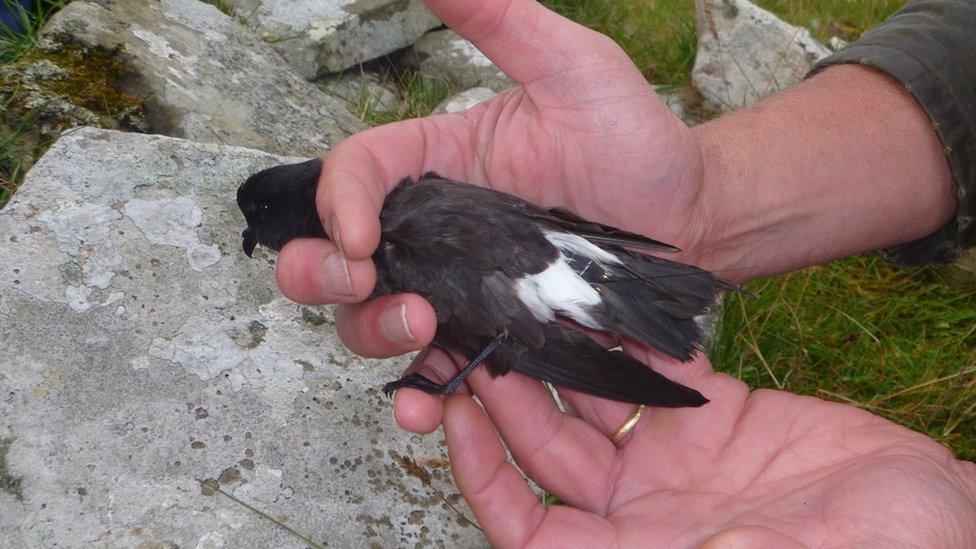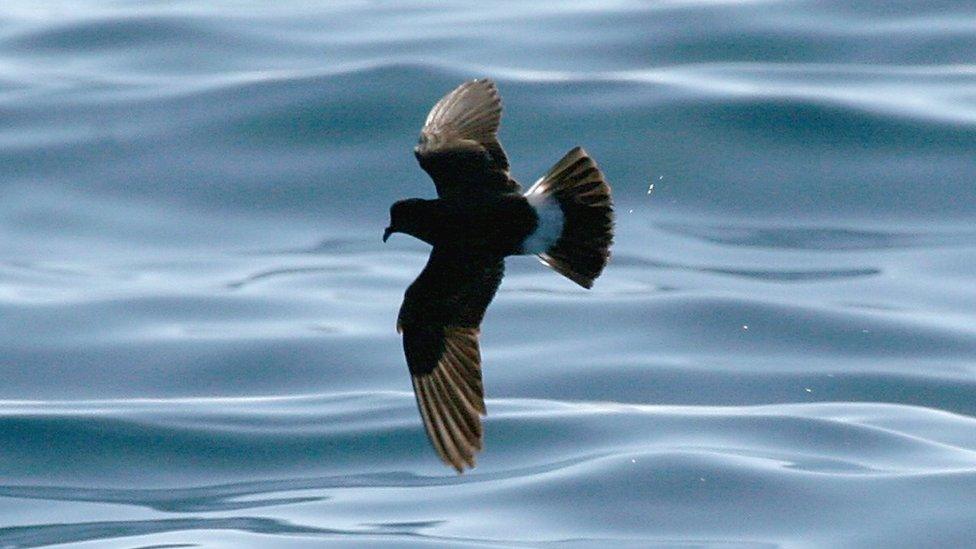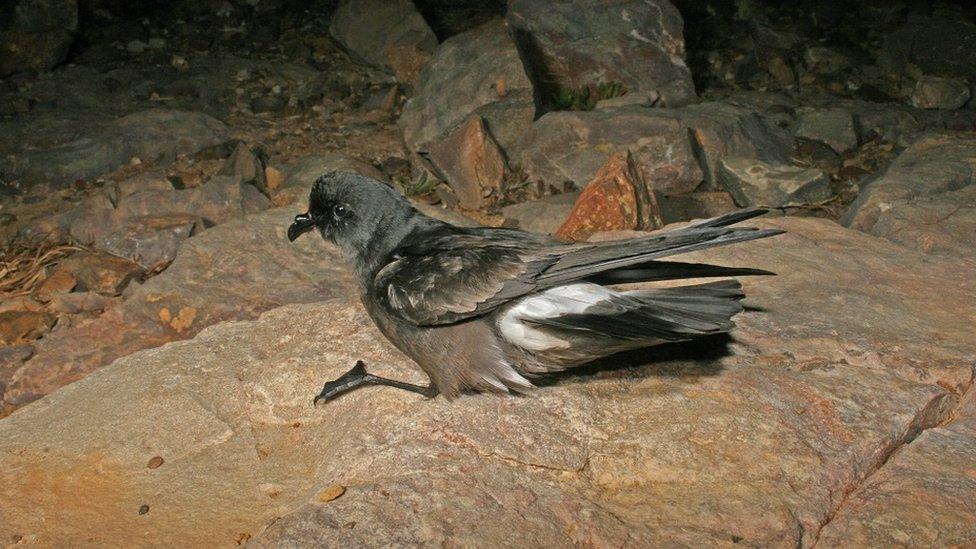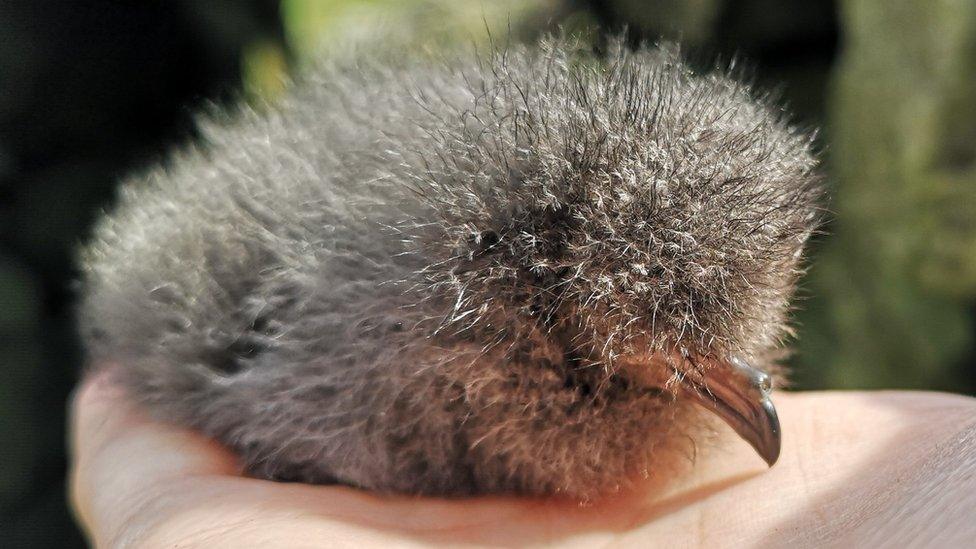Storm petrels: Satellite tags reveal secrets of UK's smallest seabird
- Published

Storm petrels on the island of Mousa were fitted with light-weight GPS tags
The UK's smallest seabird regularly travels up to 186miles (300km) to feed in stormy waters off Shetland, according to new satellite tag data.
Adult storm petrels on Mousa, Shetland, were fitted with GPS devices to better understand where they foraged for plankton and small fish at night.
The data revealed they were flying to a previously unknown feeding area 68 miles (110km) south of their colony.
One bird even ended up almost 248 miles (400km) in Norway.
It took just 24 hours to fly back to Mousa. Researchers suspect the bird had been blown off course in bad weather.
Storm petrels migrate from the coasts of South Africa and Namibia to breed in Europe.
They nest in burrows, among rocks or holes in stone walls.
Petrels on Mousa are known to nest in the walls of a fortified Iron Age house called a broch.

The birds will travel for miles to find food
Adults birds weigh about 30 grams - just over one ounce. The tags used in the research project, which involved RSPB Scotland, weighed less an a gram.
Fieldwork was carried out on the island of Mousa between mid July and late August each year between 2014 and 2017. The colony is home to almost 11,000 pairs of storm petrels.
Forty-two birds were tracked and many of their foraging trips lasted between one and three days and generally ranged up to 186 miles (300km) from the colony.
The research, published in journal Bird Conservation International, external, suggested the birds were feeding in previously unknown areas including a site south of the colony and also close to shore.
Researchers had expected the birds to use waters to the west of Shetland, where high concentrations of storm petrels had been reported in previous decades from boat surveys.

Storm petrels are the UK's smallest seabird
Mark Bolton, the research paper's author, said: "This was ambitious research and provides the most comprehensive insight into how these tiny birds use our vast marine environment to feed and raise their young.
"The new insights about their behaviour demonstrate the value of fundamental science as well as providing an amazing window into the travels of our smallest seabird."
Head of marine policy at RSPB Scotland, Alex Kinninmonth, said the study had identified "overlooked" locations where the birds could be found.
He added: "Scotland's seabirds are already in trouble and face an uncertain future, so expanding our knowledge of where they go at sea and why is vital to give them a fighting chance against ever increasing human-made pressures."
- Published27 August 2019
